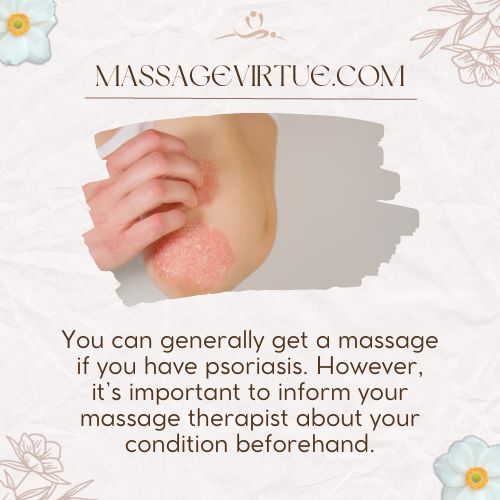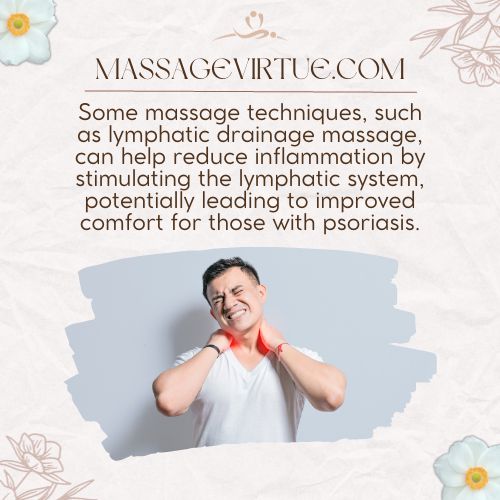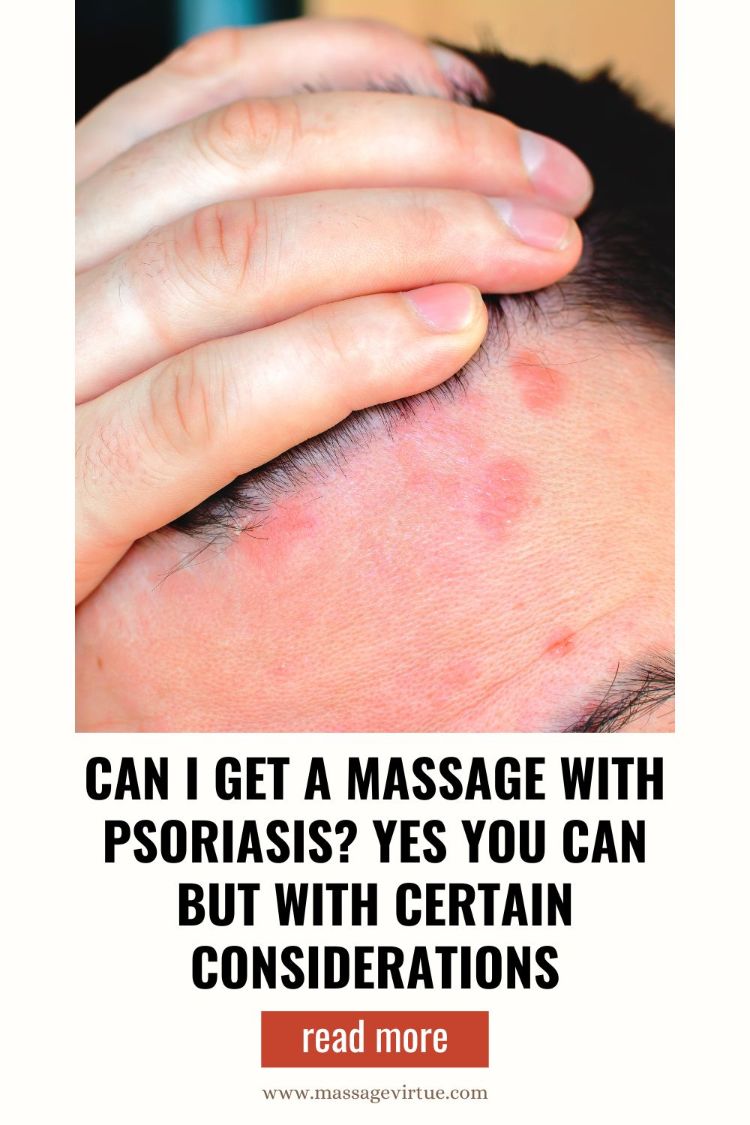Psoriasis is a chronic skin condition that affects millions of people worldwide, causing discomfort and affecting their overall quality of life.
Many individuals with psoriasis seek alternative therapies to alleviate symptoms, improve relaxation, and enhance their well-being.
One such therapy that often comes to mind is massage.
In this article, we will explore the possibilities and considerations surrounding getting a massage with psoriasis, helping you make an informed decision about whether it’s right for you.
Can I Get a Massage With Psoriasis?
Yes, you can generally get a massage if you have psoriasis. However, it’s important to inform your massage therapist about your condition beforehand.

Psoriasis is a skin condition, and friction from the massage might irritate your skin or cause discomfort. A skilled therapist can adjust the pressure and avoid affected areas.
Using hypoallergenic oils or lotions is advisable.
Always prioritize your comfort and safety, and consult with your healthcare provider if you have concerns about getting a massage with psoriasis.
The Benefits of Massage for Psoriasis
Massage therapy offers various benefits for psoriasis. Let’s have a closer look at some of them:
1. Stress Relief
Living with psoriasis can be stressful, both physically and emotionally.
The constant visibility of psoriatic lesions can lead to anxiety and reduced self-esteem. Massage therapy is known for its stress-relieving benefits, as it can help release endorphins, which are natural mood elevators.
This relaxation can be especially valuable for individuals with psoriasis, promoting a sense of well-being.
2. Pain Relief
Psoriasis can cause discomfort and pain, particularly when psoriatic lesions crack and bleed or when joint stiffness and muscle tension occur.
Massage techniques can target specific areas of pain, providing relief by increasing blood circulation and relaxing muscles.
3. Reduction of Inflammation
Inflammation is a common factor in both psoriasis and joint pain associated with the condition.

Some massage techniques, such as lymphatic drainage massage, can help reduce inflammation by stimulating the lymphatic system, potentially leading to improved comfort for those with psoriasis.
Considerations When Getting a Massage With Psoriasis
Getting a massage with psoriasis holds certain considerations. Let’s explore some of them:
1. Communication with Your Massage Therapist
When considering a massage with psoriasis, it is crucial to communicate openly with your massage therapist.
Inform them about your condition, including the severity of your psoriatic lesions and any joint or muscle discomfort you may be experiencing.
A skilled therapist can tailor the massage to your specific needs, using appropriate techniques and avoiding areas of active psoriasis.
2. Avoidance of Psoriatic Lesions
During a massage, therapists generally avoid applying direct pressure to active psoriatic lesions.
Massage strokes are directed away from these areas to prevent further irritation or damage to the skin.
This is an essential consideration to ensure your safety and comfort during the massage.
3. Selecting the Right Massage Technique
There are various massage techniques available, each with its own set of benefits.

For individuals with psoriasis, it’s advisable to choose gentle techniques, such as Swedish massage or aromatherapy massage, which focus on relaxation and stress relief.
Deep tissue or sports massages may not be suitable for those with psoriasis, as they involve more intense pressure.
4. Skin Care Before and After the Massage
Proper skin care is essential when considering a massage with psoriasis.
Before the session, make sure your skin is clean and well-moisturized to prevent excessive friction during the massage.
After the massage, apply a gentle, fragrance-free moisturizer to keep your skin hydrated and reduce the risk of irritation.
5. Allergies and Sensitivities
If you have allergies or sensitivities to massage oils or lotions, be sure to inform your massage therapist.
They can use hypoallergenic products to ensure your comfort and safety during the session.
Conclusion
Massage therapy can offer numerous benefits for individuals living with psoriasis, including stress relief, pain reduction, and improved overall well-being.
However, it’s essential to approach massage with psoriasis carefully, communicating openly with your massage therapist and considering your specific needs and sensitivities.
FAQs
What to Consider for Massage with Psoriasis?
When thinking about getting a massage with psoriasis, open communication with your therapist is vital. They need to know your psoriasis extent and discomfort level.
During the massage, your therapist should avoid active psoriatic lesions to prevent irritation.
Choose gentle techniques like Swedish or aromatherapy for relaxation. Before the massage, ensure clean and moisturized skin. After, use fragrance-free moisturizer to reduce irritation risk.
What Not to Do with Psoriasis?
Avoid harsh scrubbing that can worsen psoriatic lesions and irritation. Opt for lukewarm water, and gentle, fragrance-free soaps, and resist scratching psoriatic lesions to prevent bleeding and worsening.
Limit alcohol and quit smoking for symptom improvement.
What Type of Skin Should You Avoid Massage On?
Avoid massaging active psoriatic lesions and areas with cuts, wounds, or open sores to prevent potential infection.
If psoriatic lesions are infected, seek medical treatment instead of massage. Always consult your healthcare provider and a qualified therapist for personalized guidance on psoriasis care.


